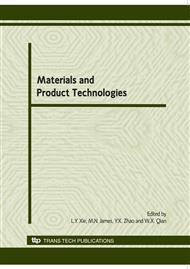p.851
p.855
p.860
p.866
p.871
p.876
p.881
p.886
p.891
Analysis of Hydraulic Lifting System and Design of Cylinder for the New 450t Schnabel Car
Abstract:
The hydraulic lifting system of 450t schnabel car is more complex variable geometry mechanism. A simple technique for solving variable geometry mechanism is presented. The technique is based on energy conservation principle of hydraulic lifting process. The lifting principle and geometrical models are analyzed and formulated. The lifting pressure is calculated. The static strength design and bulking stability checking are introduced for cylindrical pressure cylinder. Results show that the maximum rated oil pressure meets cylinder lifting requirement, the static strengths of cylinder and piston reach lifting safety and reliability, and anti-bulking stability can be guaranteed under the loading and working conditions.
Info:
Periodical:
Pages:
871-875
Citation:
Online since:
June 2010
Authors:
Price:
Сopyright:
© 2010 Trans Tech Publications Ltd. All Rights Reserved
Share:
Citation:


